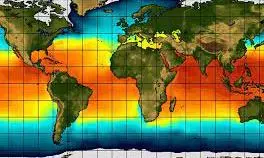
El Nino impact to extend, March-May to witness above-normal temperatures
text_fieldsThe United Nations' World Meteorological Organization (WMO) has indicated that the recent El Nino weather phenomenon, which reached its peak in December, is among the five most potent ever recorded.
Despite the current weakening of El Nino, the WMO forecasts its continued impact until May, contributing to above-normal temperatures across most land areas.
According to the WMO's quarterly update, the influence of El Nino persists, elevating temperatures by trapping heat in the atmosphere due to greenhouse gases. The phenomenon, characterized by extensive warming of surface temperatures in the central and eastern equatorial Pacific Ocean, typically exerts its maximum influence on global climate in the year following its development, as is expected in 2024.
The forecast indicates a 60% chance of El Nino persisting from March to May, with an 80% chance of neutral conditions in April to June. El Nino is linked to heightened global temperatures, drought in some regions, and heavy rainfall in others.
WMO Chief, Celeste Saulo, emphasized that while El Nino has contributed to record temperatures over recent months, human-induced climate change, driven by elevated concentrations of greenhouse gases like carbon dioxide, methane, and nitrous oxide, remains the primary cause.
Saulo highlighted that every month since June 2023 has set new temperature records, with 2023 being the warmest year on record.
The current El Nino, which began in June 2023, was strongest between November and January, reaching temperatures about 2.0 degrees Celsius above the 1991 to 2020 average sea surface temperature for the eastern and central tropical Pacific Ocean. Despite the El Nino's impact, the WMO expressed concern about persistently high sea surface temperatures globally, indicating a broader climate issue beyond El Nino alone.
The WMO suggested a 2024 outlook with a potential La Nina development later in the year, although uncertainties surround this possibility.
This El Nino event follows an unusually prolonged La Nina from 2020 to early 2023, contributing to the nine hottest individual years recorded since 2015. The WMO emphasizes the urgent need for substantial cuts in greenhouse gas emissions to address climate change.

















